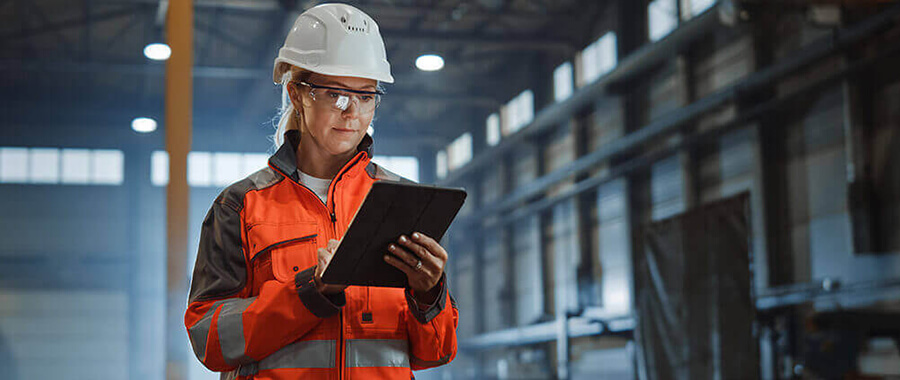Safety Audit vs. Risk Assessment: What’s the Difference?
Safety Audit vs. Risk Assessment: What’s the Difference?
Blog Article
Ensuring workplace safety is a top priority across industries. However, many organizations struggle to distinguish between Safety Audits and Risk Assessments. While both serve as critical tools in identifying hazards and improving workplace safety, they differ in purpose, approach, and outcomes.
This article provides a detailed comparison of Safety Audits and Risk Assessments, their importance, methodologies, and real-world applications.
What is a Safety Audit?
A Safety Audit is a systematic evaluation of an organization’s safety protocols, compliance with regulations, and overall safety management system. It is a structured process aimed at identifying gaps, ensuring adherence to legal standards, and recommending corrective actions.
Key Features of a Safety Audit
- Compliance Check – Verifies adherence to industry safety regulations and standards.
- Systematic Review – Examines safety policies, procedures, and records.
- Continuous Improvement – Identifies weaknesses and provides corrective recommendations.
- Documentation & Reporting – Generates a report highlighting findings and corrective measures.
Who Conducts a Safety Audit?
A Safety Consultant or an internal safety team typically performs a Safety Audit. Their role is to assess the organization’s safety performance objectively and recommend necessary improvements.
What is a Risk Assessment?
A Risk Assessment is the process of identifying potential hazards, analyzing associated risks, and determining mitigation strategies. Unlike an audit, which focuses on compliance and system effectiveness, a risk assessment is more dynamic, emphasizing hazard identification and risk minimization.
Key Features of a Risk Assessment
- Hazard Identification – Recognizes potential dangers in a workplace.
- Risk Analysis – Evaluates the likelihood and severity of hazards.
- Control Measures – Recommends actions to eliminate or mitigate risks.
- Proactive Approach – Conducted before incidents occur rather than after.
Safety Audit vs. Risk Assessment: A Detailed Comparison
| Aspect | Safety Audit | Risk Assessment |
|---|---|---|
| Purpose | Evaluates compliance and safety management system effectiveness. | Identifies hazards and determines necessary risk controls. |
| Approach | A structured review of policies, procedures, and records. | A proactive analysis of workplace risks. |
| Focus | Legal compliance, safety culture, and procedural adherence. | Hazard identification, likelihood, and risk control measures. |
| Outcome | A comprehensive report with recommendations for improvement. | A risk matrix and control strategies to mitigate hazards. |
| Frequency | Periodic (quarterly, annually, or as required). | Ongoing, with assessments before introducing new processes. |
Why Are Both Safety Audits and Risk Assessments Important?
Both Safety Audits and Risk Assessments play crucial roles in workplace safety. Here’s why organizations should implement both:
1. Ensuring Regulatory Compliance
A Safety Audit ensures that businesses adhere to workplace safety regulations. Failure to comply with these regulations can result in penalties, legal consequences, and reputational damage.
2. Identifying and Controlling Hazards
While a Safety Audit ensures compliance, a Risk Assessment actively identifies hazards before they lead to incidents. Together, they create a robust safety framework.
3. Reducing Workplace Accidents
By conducting both audits and risk assessments, organizations minimize the chances of workplace accidents, protecting employees and reducing downtime.
4. Continuous Safety Improvement
Safety Audits provide a strategic overview, while Risk Assessments offer real-time hazard identification, leading to a proactive and continuously improving safety culture.
Methods Used in Safety Audits and Risk Assessments
Different methodologies are used to ensure thorough evaluations in both Safety Audits and Risk Assessments.
Methods in Safety Audits
- Process Safety Management – Ensures systematic identification and management of hazardous processes.
- Document Reviews – Examines safety manuals, policies, and incident reports.
- Interviews & Observations – Engages employees and assesses workplace conditions.
Methods in Risk Assessments
- Hazop Study – A structured method to identify hazards in industrial processes.
- Job Safety Analysis (JSA) – Breaks tasks into steps to evaluate potential risks.
- Failure Modes and Effects Analysis (FMEA) – Identifies potential failures and their impact.
Common Challenges in Conducting Safety Audits and Risk Assessments
1. Lack of Resources and Expertise
Conducting an effective Safety Audit requires knowledgeable auditors who understand safety regulations and compliance. Many organizations lack in-house expertise, making it essential to engage external specialists.
2. Resistance to Change
Employees may resist changes recommended during audits, leading to delays in implementation. Proper training and communication help in overcoming resistance.
3. Overlooking Minor Hazards
Risk Assessments often focus on high-risk hazards while ignoring minor hazards that can lead to long-term risks. A detailed assessment process is crucial.
4. Inconsistent Implementation of Safety Measures
Even after identifying risks, organizations sometimes fail to implement proper control measures. Regular follow-ups and monitoring ensure effective execution.
Best Practices for Conducting Safety Audits and Risk Assessments
To enhance workplace safety, organizations should adopt the following best practices:
1. Establish Clear Objectives
Define what the Safety Audit and Risk Assessment should achieve. Clear goals help in focused and effective execution.
2. Involve Employees in the Process
Encourage participation from workers as they have first-hand knowledge of workplace hazards.
3. Regularly Update Safety Procedures
Safety standards evolve. Organizations must update their procedures based on audit findings and risk assessments.
4. Conduct Follow-Ups
An audit or assessment is not a one-time process. Regular reviews and corrective actions ensure long-term workplace safety.
5. Leverage Technology for Better Analysis
Using software tools for Fire Audits and Risk Assessments helps in better data collection, analysis, and reporting.
Conclusion
Both Safety Audits and Risk Assessments are essential in creating a safe workplace. While Safety Audits ensure compliance with laws and regulations, Risk Assessments focus on identifying hazards and mitigating risks proactively. Implementing both approaches effectively helps organizations foster a culture of safety, minimize workplace accidents, and ensure a safer working environment.
Organizations should prioritize conducting both audits and risk assessments regularly, leveraging modern methodologies like Hazop Studies and Process Safety Management to enhance workplace safety. By integrating both proactive and compliance-based strategies, businesses can protect their workforce, improve operational efficiency, and maintain a strong safety record. Report this page
